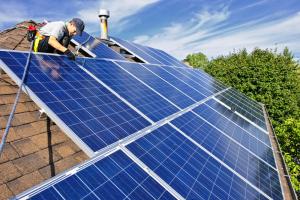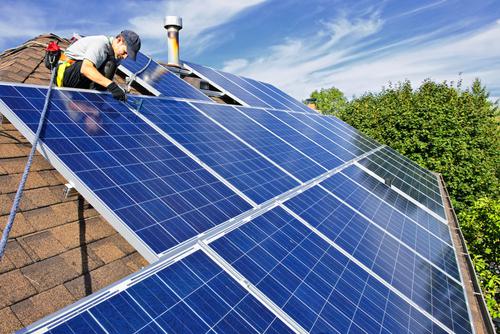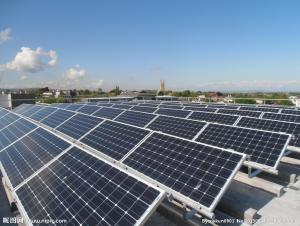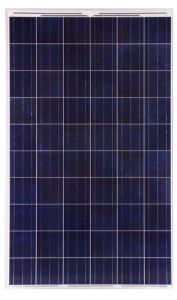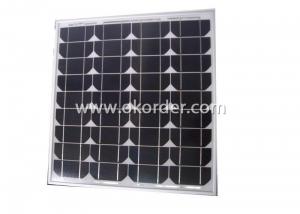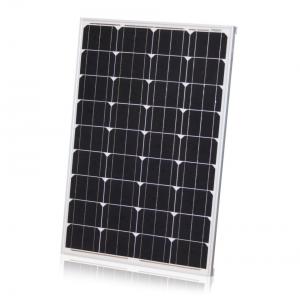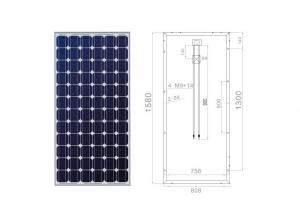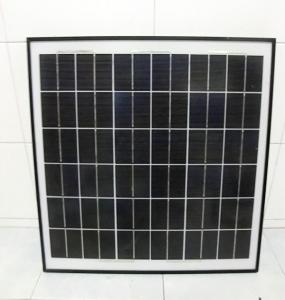Heliene Solar Panels Solar Module
- Loading Port:
- Tianjin
- Payment Terms:
- TT or LC
- Min Order Qty:
- 1000 watt
- Supply Capability:
- 300000 watt/month
OKorder Service Pledge
OKorder Financial Service
You Might Also Like
ABOUT YINGLI GREEN ENERGY
Yingli Green Energy Holding Company Limited (NYSE: YGE) is one of the world’s largest fully vertically integrated PV manufacturers, which
markets its products under the brand “Yingli Solar“.
With over 7.0GW of modules installed globally, we are a leading solar energy company built upon proven product reliability and sustainable performance.
We are the fi rst renewable energy company and the fi rst Chinese company to sponsor the FIFA World CupTM.
PERFORMANCE
- High effi ciency, multicrystalline silicon solar cells with high transmission and textured glass deliver a module effi ciency of up to 16.0%,
minimizing installation costs and maximizing the kWh output of your system per unit area.
- Tight positive power tolerance of 0W to +5W ensures you receive modules at or above nameplate power and contributes to minimizing
module mismatch losses leading to improved system yield.
- Top ranking in the “TÜV Rheinland Energy Yield Test” and the “PHOTON Test” demonstrates high performance and annual energy production.
RELIABILITY
- Tests by independent laboratories prove that Yingli Solar modules:
Fully conform to certifi cation and regulatory standards.
Withstand wind loads of up to 2.4kPa and snow loads of up to 5.4kPa, confi rming mechanical stability.
Successfully endure ammonia and salt-mist exposure at the highest severity level, ensuring their performance in adverse conditions.
- Manufacturing facility certifi ed by TÜV Rheinland to ISO 9001:2008, ISO 14001:2004 and BS OHSAS 18001:2007.
WARRANTIES
- 10-year limited product warranty1.
- Limited power warranty1: 10 years at 91.2% of the minimal rated power output, 25 years at 80.7% of the minimal rated power output.1In compliance with our Warranty Terms and Conditions.
QUALIFICATIONS & CERTIFICATES
IEC 61215, IEC 61730, MCS, CE, ISO 9001:2008, ISO 14001:2004, BS OHSAS
18001:2007, PV Cycle, SA 8000
ELECTRICAL PERFORMANCE
Electrical parameters at Standard Test Conditions (STC)
Module type YLxxxP-29b (xxx=Pmax)
Power output Pmax W 260 255 250 245 240
Power output tolerances ΔPmax W 0 / + 5
Module effi ciency ηm % 16.0 15.7 15.4 15.1 14.8
Voltage at Pmax Vmpp V 30.3 30.0 29.8 29.6 29.3
Current at Pmax Impp A 8.59 8.49 8.39 8.28 8.18
Open-circuit voltage Voc V 37.7 37.7 37.6 37.5 37.5
Short-circuit current Isc A 9.09 9.01 8.92 8.83 8.75
Electrical parameters at Nominal Operating Cell Temperature (NOCT)
Power output Pmax W 189.7 186.0 182.4 178.7 175.1
Voltage at Pmax Vmpp V 27.6 27.4 27.2 27.0 26.8
Current at Pmax Impp A 6.87 6.79 6.71 6.62 6.54
Open-circuit voltage Voc V 34.8 34.8 34.7 34.6 34.6
Short-circuit current Isc A 7.35 7.28 7.21 7.14 7.07
STC: 1000W/m2 irradiance, 25°C cell temperature, AM1.5g spectrum according to EN 60904-3.
Average relative effi ciency reduction of 3.3% at 200W/m2 according to EN 60904-1.
NOCT: open-circuit module operation temperature at 800W/m2 irradiance, 20°C ambient temperature, 1m/s wind speed.
OPERATING CONDITIONS
Max. system voltage 1000VDC
Max. series fuse rating 15A
Limiting reverse current 15A
Operating temperature range -40°C to 85°C
Max. static load, front (e.g., snow) 5400Pa
Max. static load, back (e.g., wind) 2400Pa
Max. hailstone impact (diameter / velocity) 25mm / 23m/s
CONSTRUCTION MATERIALS
Front cover (material / thickness) low-iron tempered glass / 3.2mm
Cell (quantity / material / dimensions /
number of busbars)
60 / multicrystalline silicon / 156mm x 156mm / 2 or 3
Encapsulant (material) ethylene vinyl acetate (EVA)
Frame (material / color / anodization color /
edge sealing) anodized aluminum alloy / silver / clear / silicone or tape
Junction box (protection degree) ≥ IP65
Cable (length / cross-sectional area) 1000mm / 4mm2
Plug connector
(type / protection degree) MC4 / IP67 or YT08-1 / IP67 or Amphenol H4 / IP68
- Q: Can solar panels be installed on theme parks or entertainment venues?
- Yes, solar panels can be installed on theme parks or entertainment venues. In fact, many parks and venues have already embraced solar energy as a sustainable and cost-effective solution to meet their energy needs. Installing solar panels can help these establishments reduce their carbon footprint, save on electricity costs, and showcase their commitment to renewable energy. Additionally, solar panels can be creatively integrated into the design of the park or venue, adding an aesthetic appeal to the overall atmosphere.
- Q: What is the payback period for solar panels?
- The payback period for solar panels can vary depending on factors such as the initial cost of installation, location, energy usage, and available incentives. However, on average, solar panels tend to have a payback period of about 5 to 10 years.
- Q: Can solar panels be used in areas with high snowfall?
- Yes, solar panels can be used in areas with high snowfall. However, it is important to consider the design and installation of the panels to ensure they can withstand heavy snow loads and are positioned at an optimal angle to maximize snow shedding. Additionally, regular maintenance, such as removing snow accumulation, may be necessary to maintain their efficiency during winter months.
- Q: What is the difference between solar panels and light panels?
- Silicon solar cells are divided into monocrystalline silicon, polysilicon, amorphous silicon, silicon thin film solar cells and several. At present, the world's most widely used solar cells are silicon solar cells, in large-scale applications and industrial production is still dominated by the penetration rate of 90% or more, monocrystalline silicon solar cell photoelectric conversion efficiency of the highest technology is also the most mature.
- Q: What is the impact of roof orientation on solar panels' performance?
- The impact of roof orientation on solar panels' performance is significant. The orientation of the roof, specifically its tilt and direction, determines the amount of sunlight the panels receive throughout the day. Ideally, solar panels should face south and have a tilt angle equal to the latitude of the location for optimal performance. Deviations from this ideal orientation can result in reduced energy production. East-facing panels produce more electricity in the morning, while west-facing panels generate more in the afternoon. North-facing panels have the lowest performance as they receive the least amount of direct sunlight. Therefore, correct roof orientation is crucial to maximize the efficiency and output of solar panels.
- Q: What Are Solar Panels Made Of?
- Learn to google and learn to ask a 3 part question instead of asking 3
- Q: Can solar panels be integrated into building materials?
- Yes, solar panels can be integrated into building materials. This innovative approach, known as building-integrated photovoltaics (BIPV), allows solar panels to be seamlessly incorporated into various architectural elements such as roofs, facades, windows, and even entire building structures. BIPV offers a dual function by serving as both a source of renewable energy and a structural component, enabling buildings to generate sustainable electricity while maintaining aesthetic appeal.
- Q: Can solar panels be used in areas with high levels of electromagnetic radiation?
- Yes, solar panels can be used in areas with high levels of electromagnetic radiation. While electromagnetic radiation can potentially interfere with the functioning of electronic devices, solar panels are designed to withstand various environmental conditions. They are typically equipped with protective measures, such as grounding and shielding, to minimize the impact of electromagnetic radiation. Therefore, as long as the solar panels are installed correctly and maintained properly, they can continue to generate electricity efficiently even in areas with high levels of electromagnetic radiation.
- Q: What would it take to make a heater for a small solar panel. I am looking into making a heater for a livestock tank to keep ice melted. I know that heaters take alot of energy to run, but my theory is that if heated mirrors on a car can melt ice with low voltage and im sure not extreme heat (40-60 degrees) then making a heater with just high enough temperature to keep from icing over and melting ice is possible. Where do I start? I would like to use an inexpensive solar panel that will generate enough heat to keep ice from forming and melt it at the beginning of the day. How can you make such a heater and apply Ohms law so that it will function correctly, what Wattage will the pannel need to produce to generate enough heat for the heater. The device will only have to be large enough to melt a spot large enough for an animal to drink.
- Homemade okorder
- Q: Can solar panels be used for powering an electric fence?
- Yes, solar panels can be used to power an electric fence. Solar panels can generate the necessary electricity to charge the fence's battery, ensuring a constant power supply for the electric fence system.
Send your message to us
Heliene Solar Panels Solar Module
- Loading Port:
- Tianjin
- Payment Terms:
- TT or LC
- Min Order Qty:
- 1000 watt
- Supply Capability:
- 300000 watt/month
OKorder Service Pledge
OKorder Financial Service
Similar products
Hot products
Hot Searches
Related keywords
